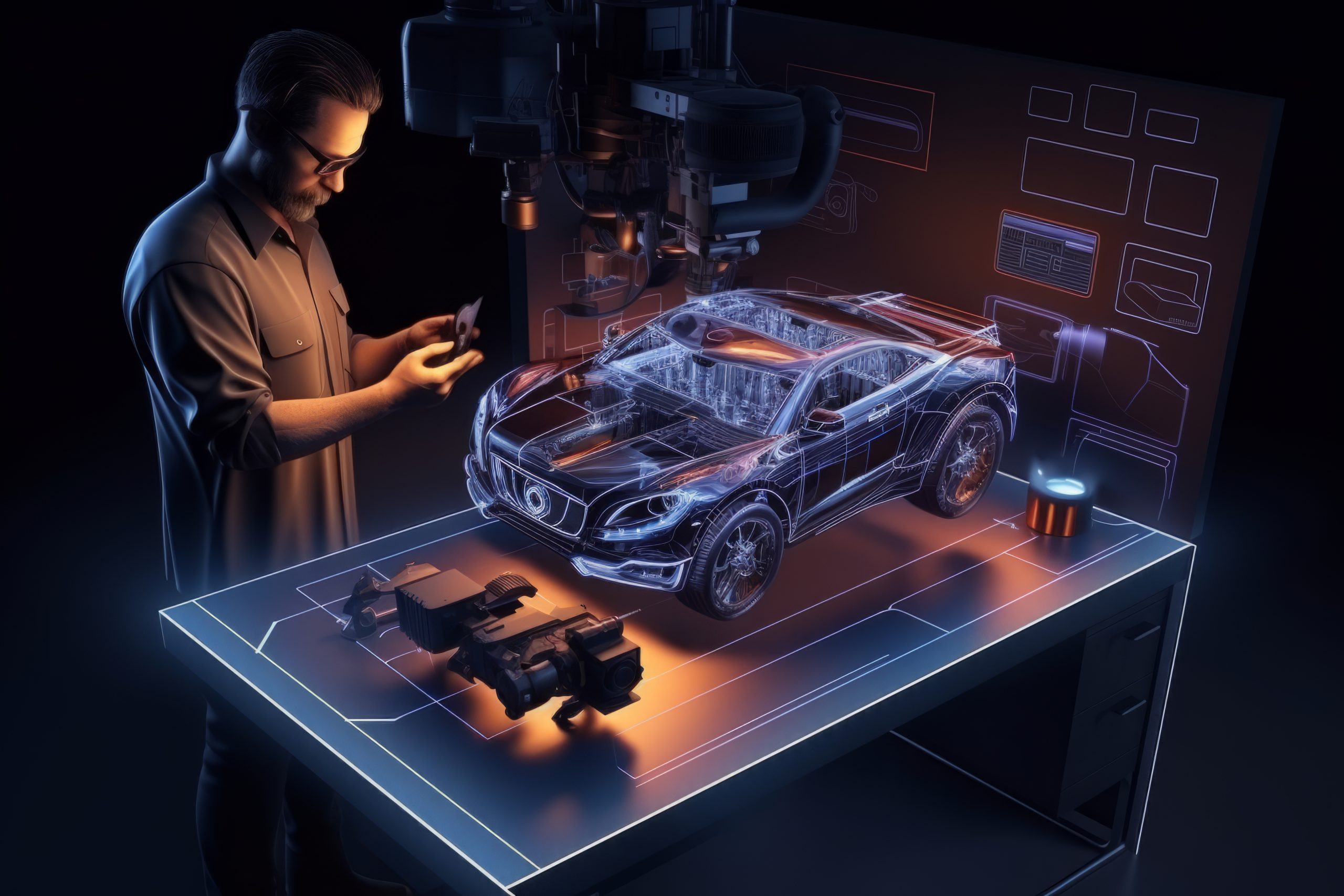
Simulating V2V Communication at Scale for Safer Roads
Introduction to Simulating V2V Communication at Scale
Imagine a busy highway where thousands of vehicles exchange data in real time. They warn one another about accidents, traffic jams, or sudden braking. This is the transformative power of simulating V2V communication. Instead of testing on real roads, engineers create digital models that scale up to over 1,000 connected cars.
In this guide, we’ll explore what simulating V2V communication means, why it matters, challenges faced at scale, the best tools available, and future trends shaping the field.
For a related read, check our How Vehicle Simulation Drives the Future of Autonomous Vehicles to see how connected systems extend into driverless technology.
What is Simulating V2V Communication at Scale?
Simulating V2V communication involves creating digital replicas of how vehicles share information using wireless networks. Instead of testing cars on highways or in urban streets—which is costly and risky—engineers model these interactions virtually.
At scale, the process tests how thousands of vehicles behave together. This allows developers to:
-
Save money on real-world testing.
-
Identify risks before deployment.
-
Model complex traffic situations, like congested cities.
For further industry insight, see this external resource on V2V basics.
Key Challenges in Simulating V2V Communication at Scale
Running simulating V2V communication with thousands of cars is no small feat. Key hurdles include:
-
Computational Power: Processing signals for 1,000+ vehicles requires immense computing strength.
-
Network Complexity: Vehicles move constantly, and wireless signals fluctuate, impacting accuracy.
-
Security and Privacy: Models must mimic real-world cyber threats and secure communications.
Modeling Interactions of 1,000+ Connected Cars
When scaling simulating V2V communication to more than 1,000 vehicles, interactions multiply rapidly. Each vehicle sends and receives hundreds of messages per second, creating massive data flows.
Key considerations include:
-
Propagation Models: Simulations must capture how signals travel differently in cities, rural roads, or highways.
-
Interference and Noise: Physical barriers like buildings reduce communication reliability.
-
Cybersecurity Risks: Models need to replicate potential hacking attempts for realistic safety measures.
Learn more in this detailed V2V research paper.
Handling Real-Time Data in Simulating V2V Communication
Real-time data is critical in simulating V2V communication:
-
Data Volume: Each car streams data such as speed, location, and braking events.
-
Latency Issues: Even microsecond delays in data exchange can alter crash-avoidance results.
-
Traffic Integration: Cars must be modeled alongside traffic patterns, weather, and road conditions.
Tools for Simulating V2V Communication at Scale
Several specialized tools simplify simulating V2V communication:
-
VEINS – Integrates traffic and network simulators, great for city-scale testing.
-
SUMO + NS-3 – SUMO models traffic flow, while NS-3 simulates wireless networks.
-
CARLA – Open-source simulator offering 3D visualization, ideal for connected vehicle checks.
-
Applied Intuition – Enterprise-grade simulation platform for large fleets.
-
Autonomie Express – Focused on energy consumption impacts in vehicle networks.
Explore our CAE Software Usability Enhanced by AI Assistants to compare more tools.
Choosing the Right Tool for Simulating V2V Communication
The right tool for simulating V2V communication depends on project needs:
-
For visualization, CARLA is beginner-friendly.
-
For network simulations, VEINS is widely used.
-
For enterprise projects, Applied Intuition provides scalability.
-
For budget-conscious teams, open-source tools are cost-effective.
Best Practices for Simulating V2V Communication at Scale
To maximize results when simulating V2V communication, follow these proven strategies:
-
Leverage Parallel Computing – Distribute workloads across multiple servers.
-
Validate Against Real Data – Constantly compare simulation outcomes with real-world results.
-
Incorporate Multi-Hop Connectivity – Vehicles should relay data to mimic real communication.
-
Monitor Key Metrics – Focus on latency, throughput, and reliability for precision.
Optimizing Performance in Large-Scale Simulations
Performance optimization ensures reliable simulating V2V communication models:
-
Simplify Physics Models: Only simulate critical vehicle behaviors.
-
Use Cloud Computing: Offload big data processing to scalable resources.
-
Focus on Scalability: Tools must withstand thousands of nodes without crashing.
Future Trends in Simulating V2V Communication
The landscape of simulating V2V communication is rapidly advancing:
-
AI Integration: Smarter predictions of driver and vehicle behavior.
-
5G and Beyond: Lower latency and faster data rates enable more accurate models.
-
Hybrid Simulations: Combining real-world testing with digital environments.
-
Sustainability Focus: Modeling energy consumption for greener mobility solutions.
-
Standardization Efforts: Global frameworks help unify simulation tools.
FAQs
Q1. What is the main goal of simulating V2V communication at scale?
It helps test how thousands of vehicles interact safely, spotting issues before deployment.
Q2. Why is computing power a challenge?
Large-scale models require heavy processing; without it, simulations may fail.
Q3. Which tool is best for beginners?
CARLA is a beginner-friendly, open-source option.
Q4. How does simulation improve traffic safety?
By modeling crash-avoidance scenarios, simulations strengthen real-world systems.
Q5. What future technologies will shape this field?
AI and 5G will significantly boost realism and accuracy in simulations.
Conclusion
Simulating V2V communication enables safer, smarter, and more efficient transportation systems. By testing 1,000+ connected vehicles virtually, engineers can anticipate real-world challenges, optimize tools, and prepare for an AI- and 5G-driven future.
If you’re an IT professional, researcher, or automotive engineer, now is the time to explore simulation tools and techniques that bring V2V to life.
Author Profile

Latest entries
 ColocationNovember 12, 2025Colocation Security Model Implementation
ColocationNovember 12, 2025Colocation Security Model Implementation Artificial InteligenceNovember 7, 2025SAP AI Strategy Enterprise Advances and Developer Tools
Artificial InteligenceNovember 7, 2025SAP AI Strategy Enterprise Advances and Developer Tools Scientific VisualizationOctober 29, 2025Federated Learning Technology in Medical Privacy AI
Scientific VisualizationOctober 29, 2025Federated Learning Technology in Medical Privacy AI Scientific VisualizationOctober 29, 2025Brain Visualization Ethics: Balancing Innovation and Privacy
Scientific VisualizationOctober 29, 2025Brain Visualization Ethics: Balancing Innovation and Privacy

